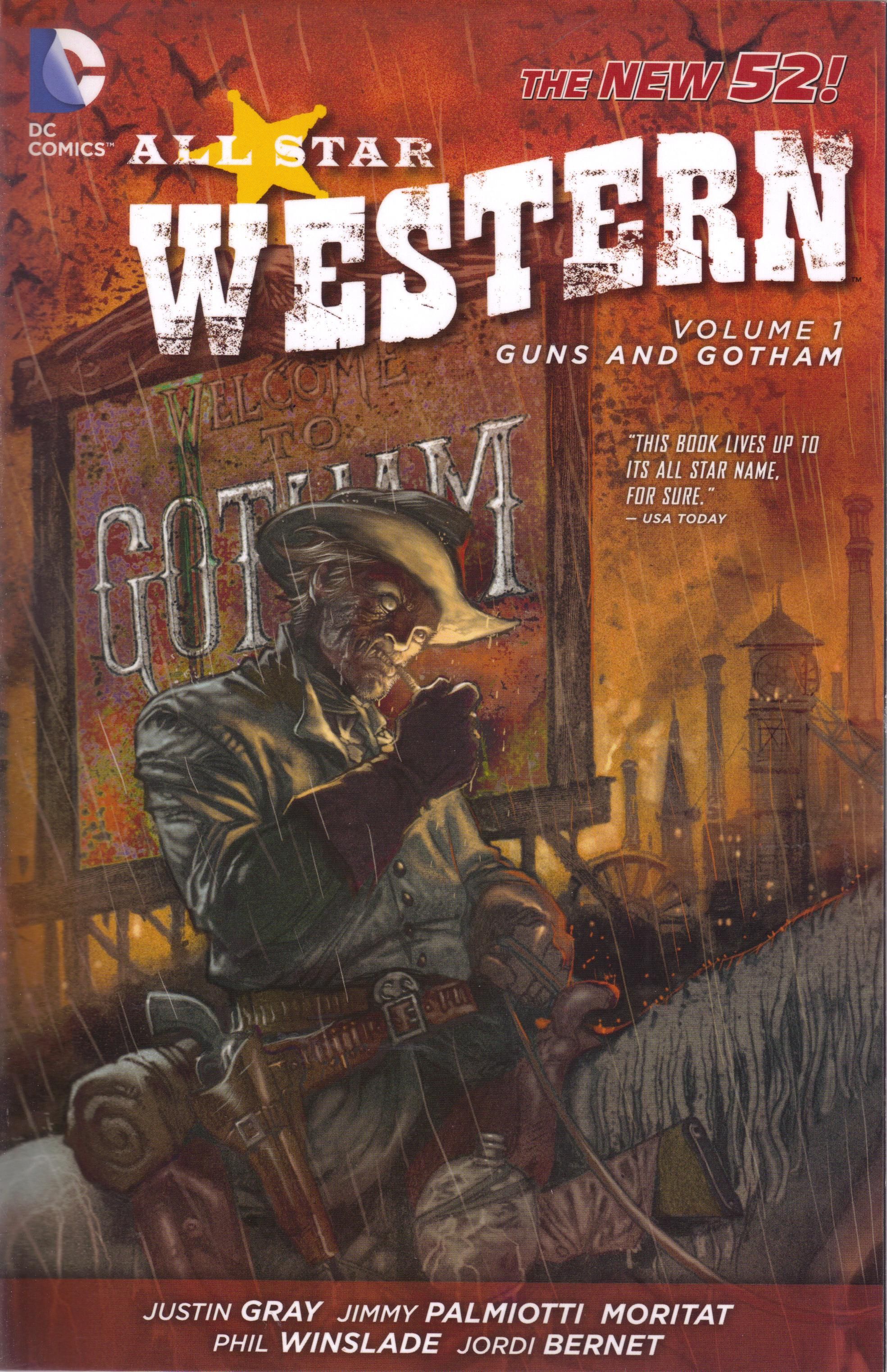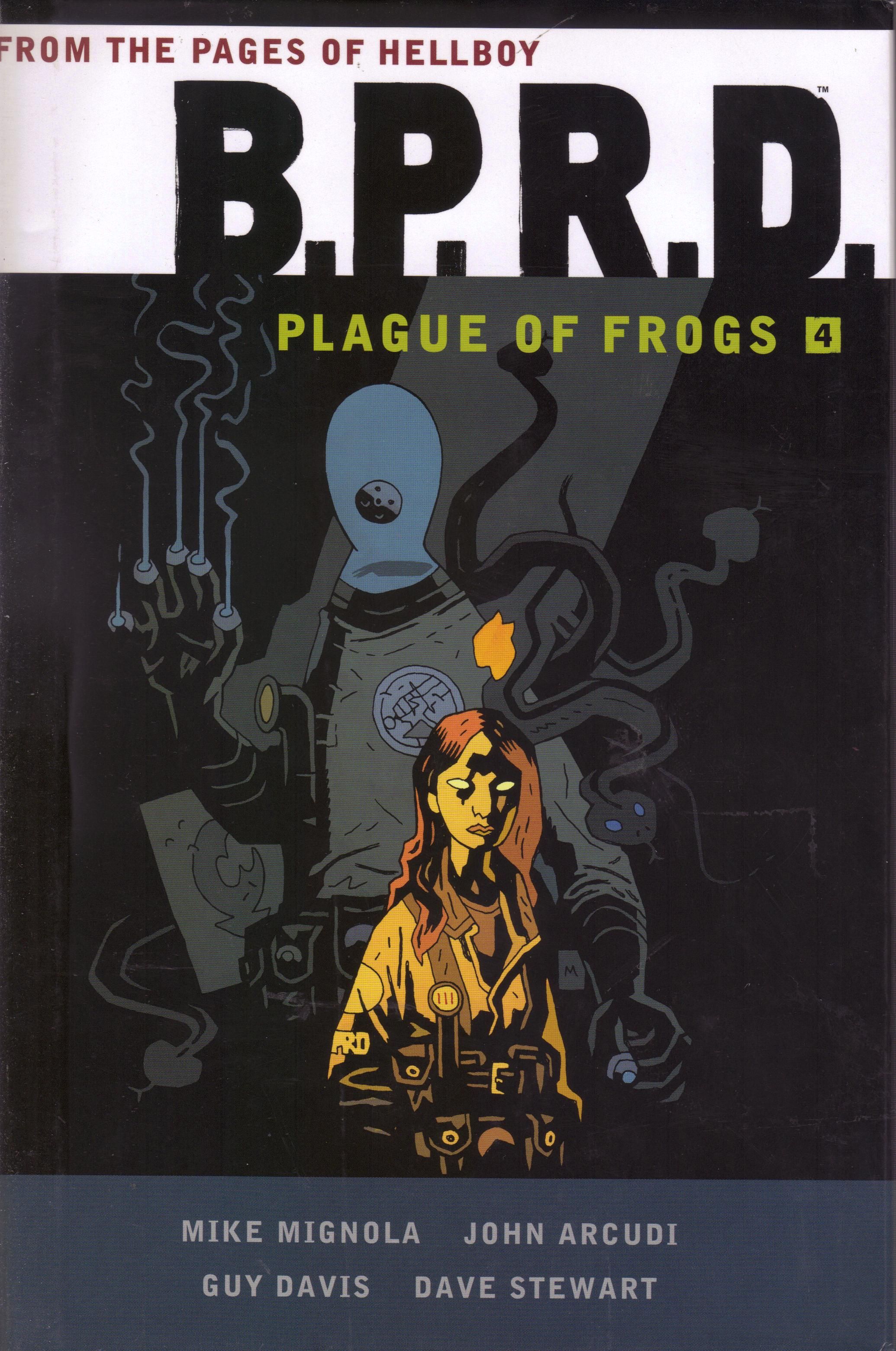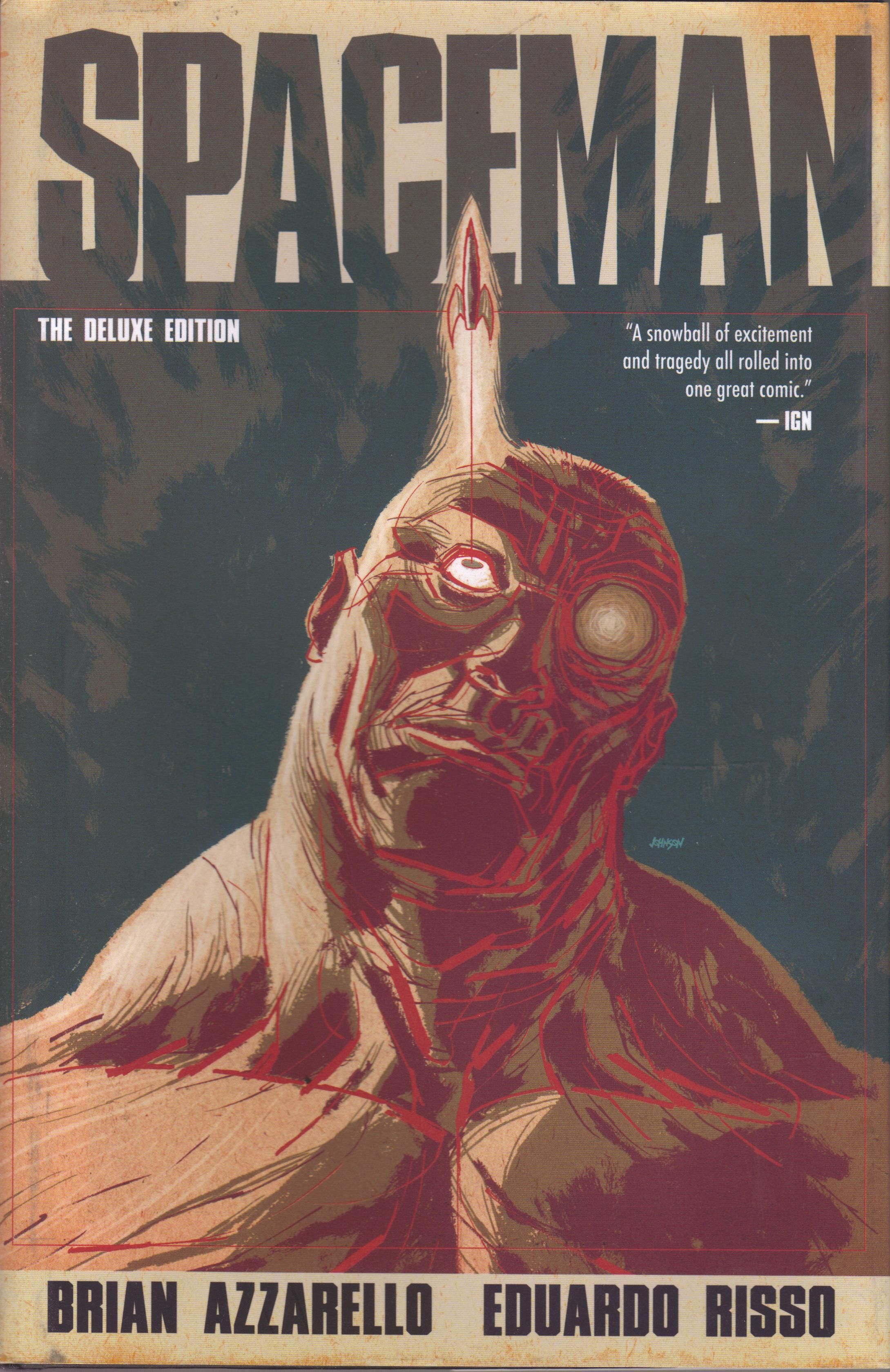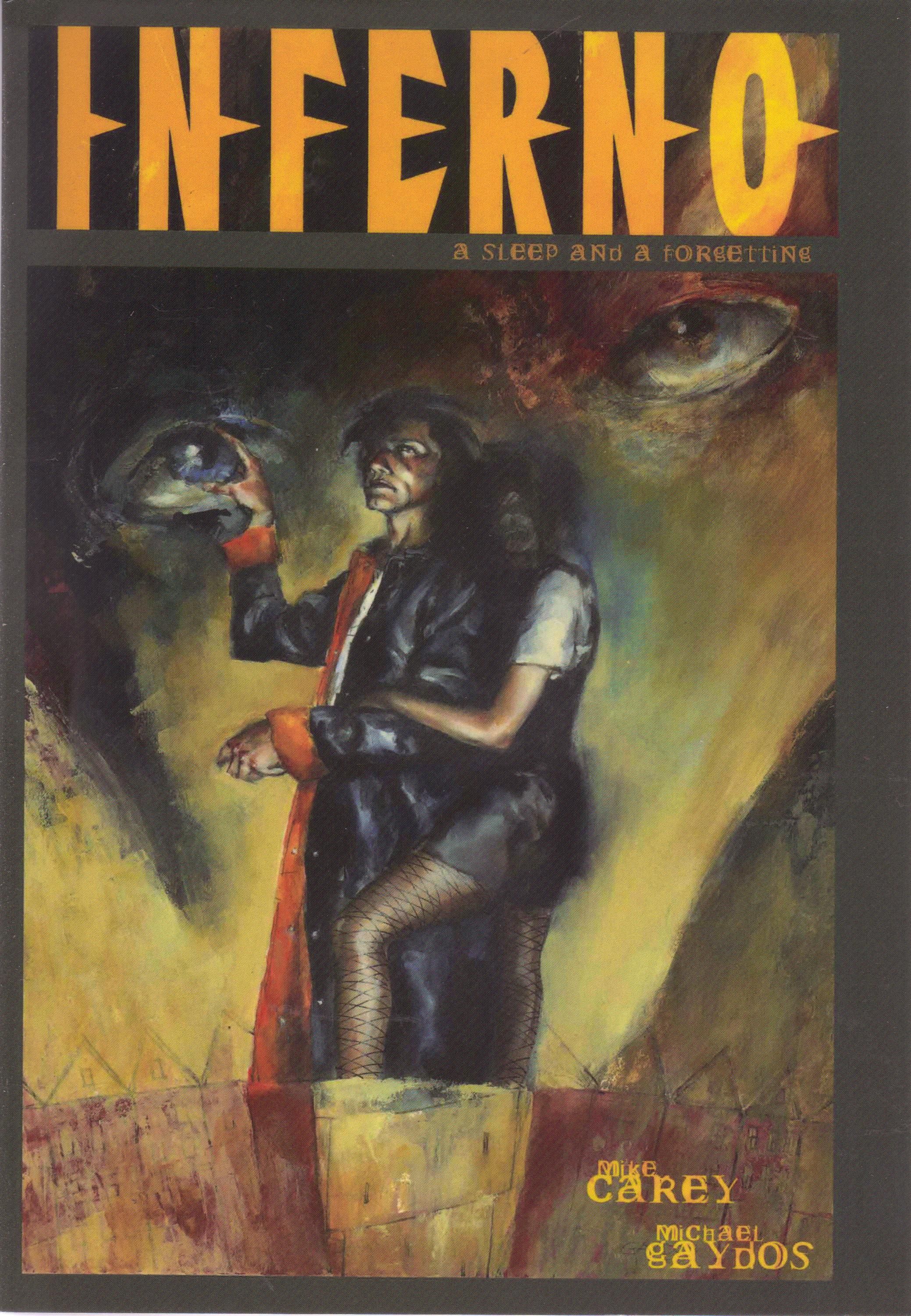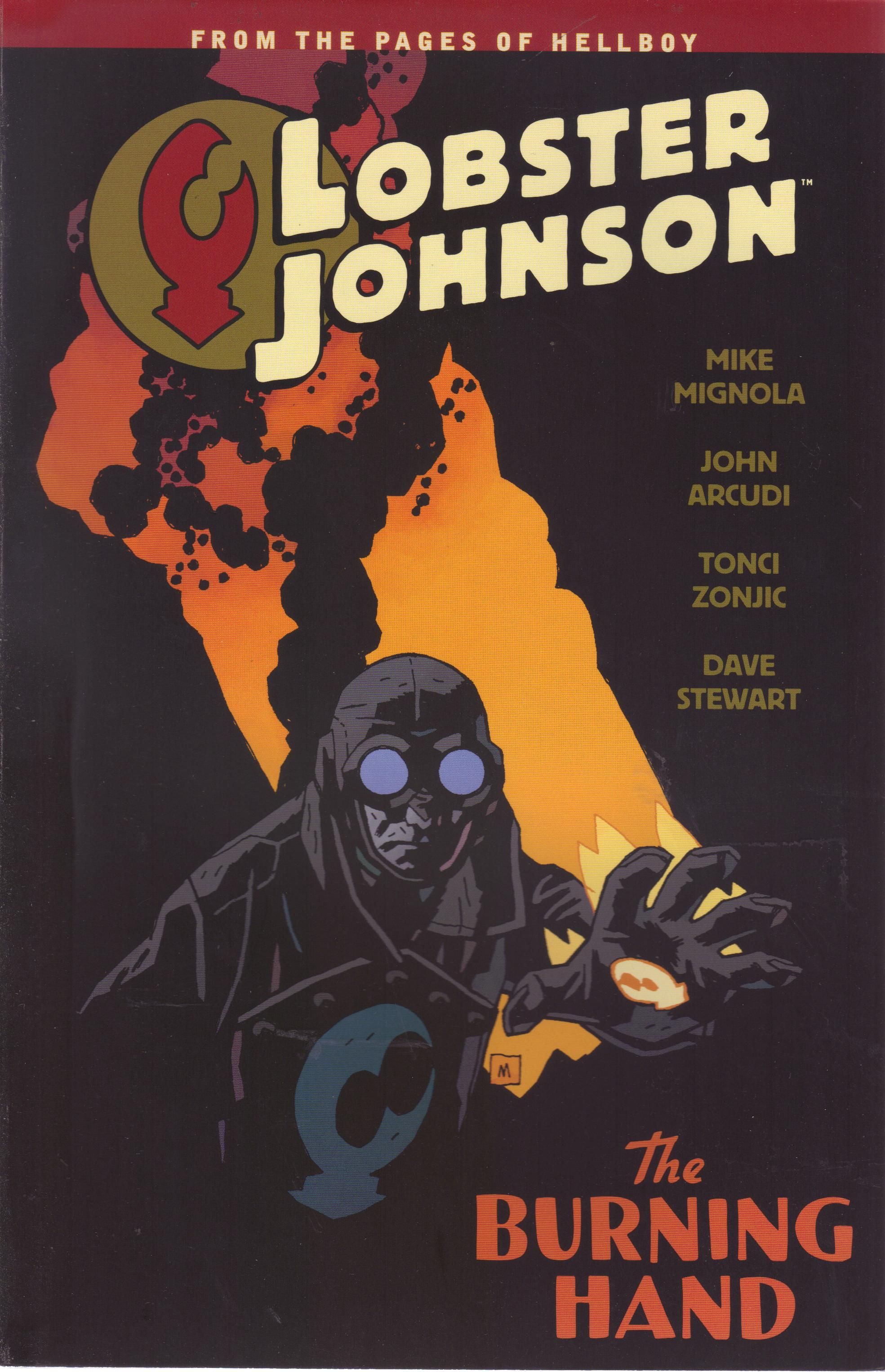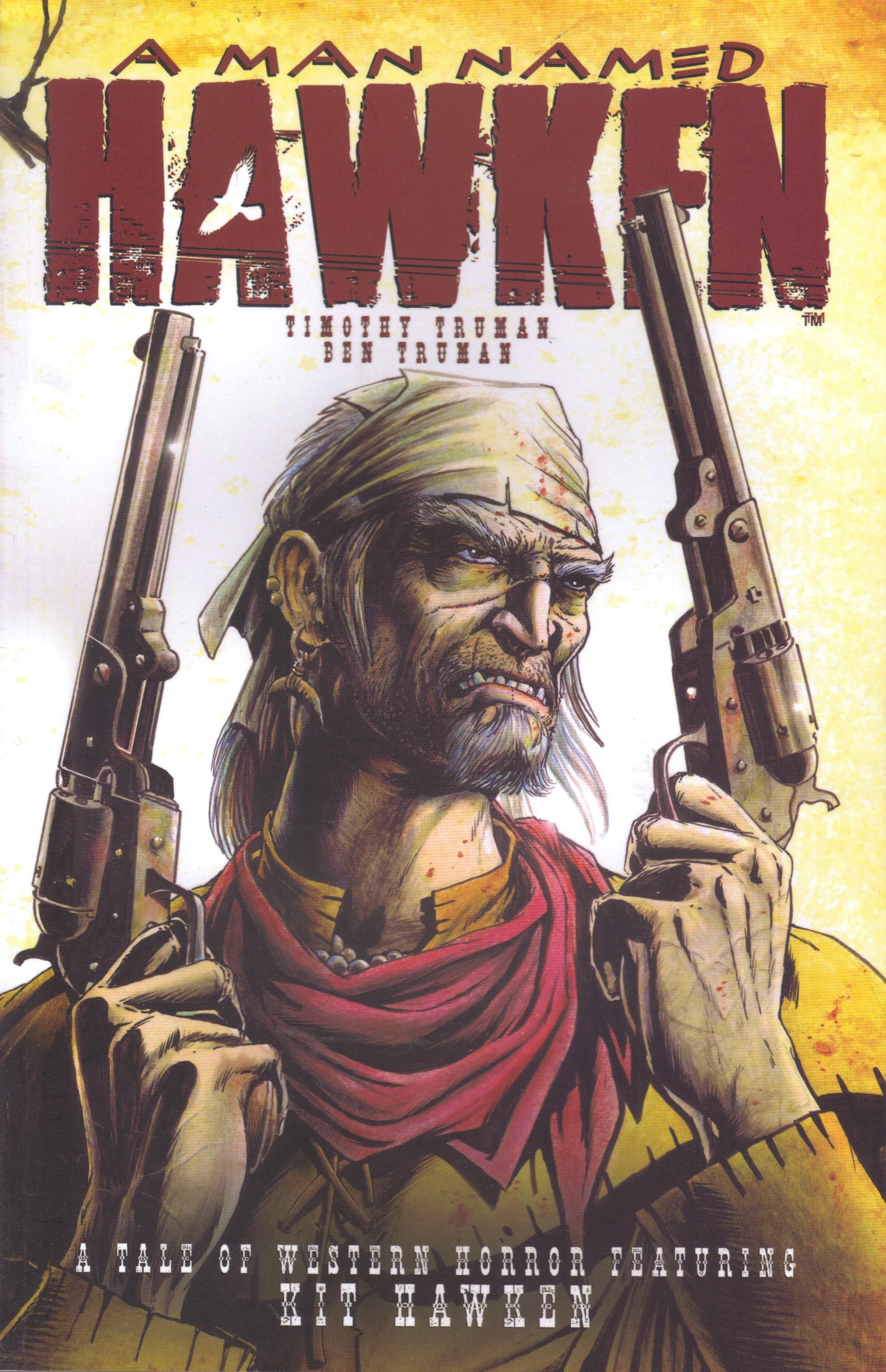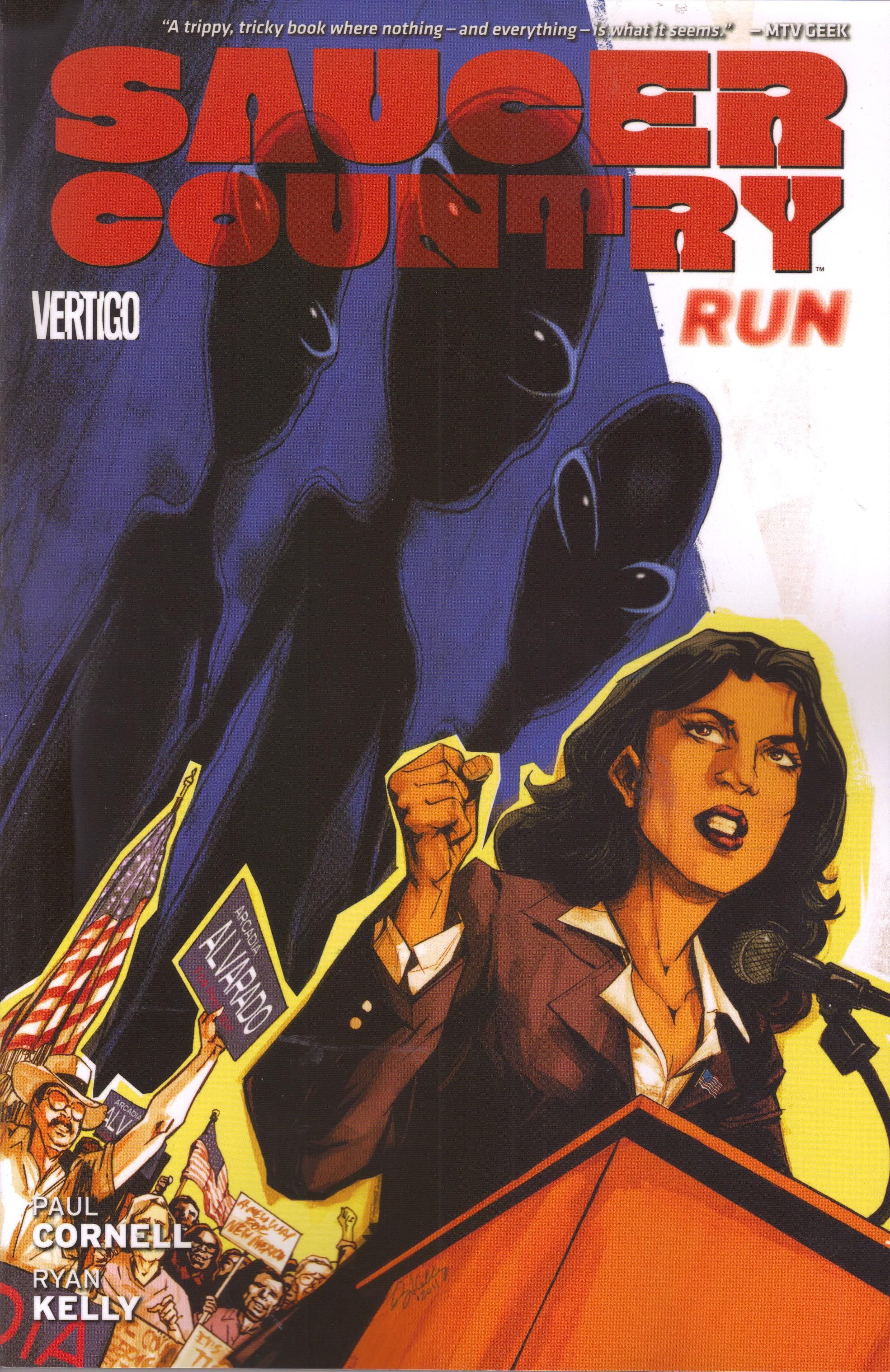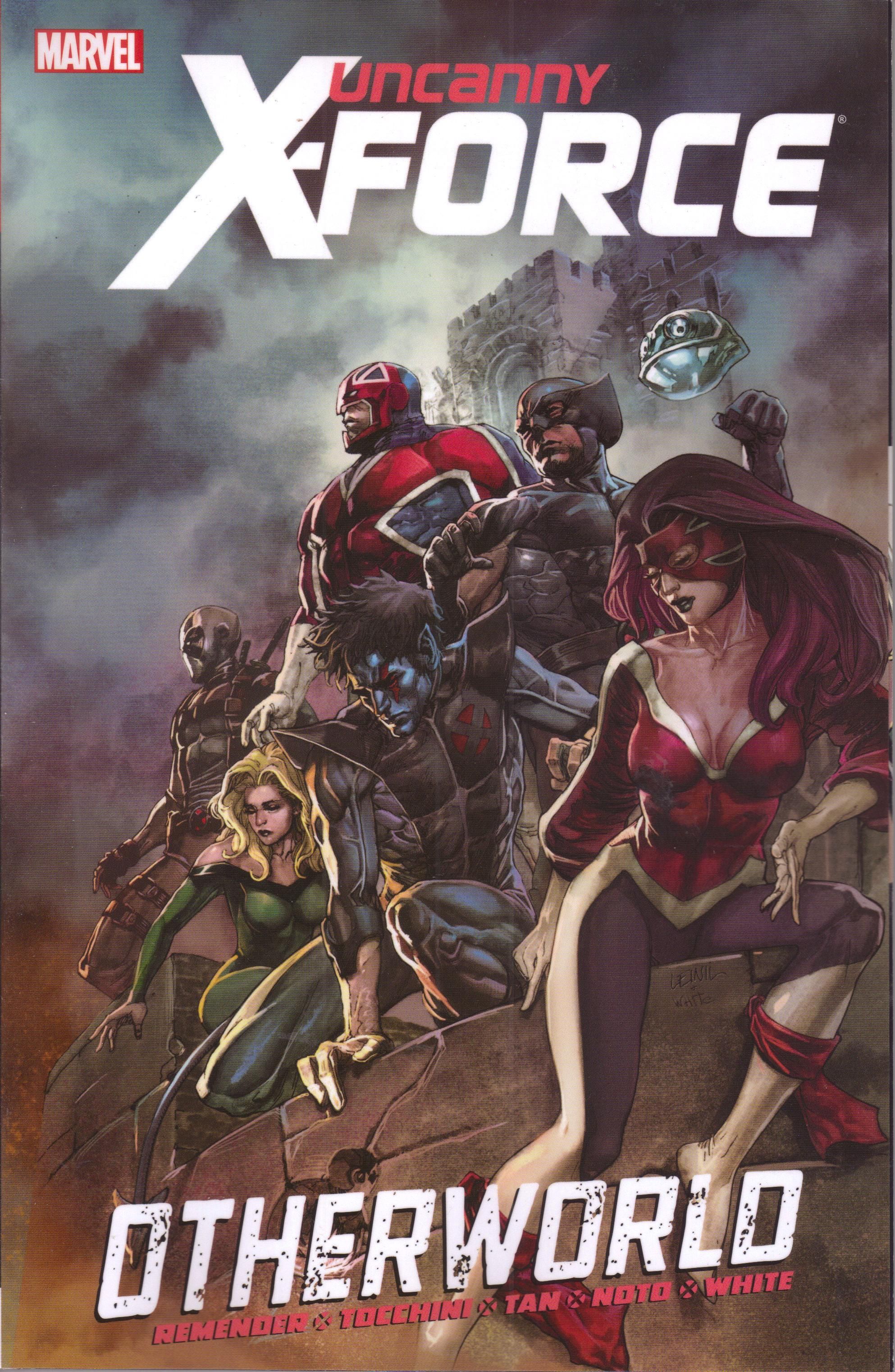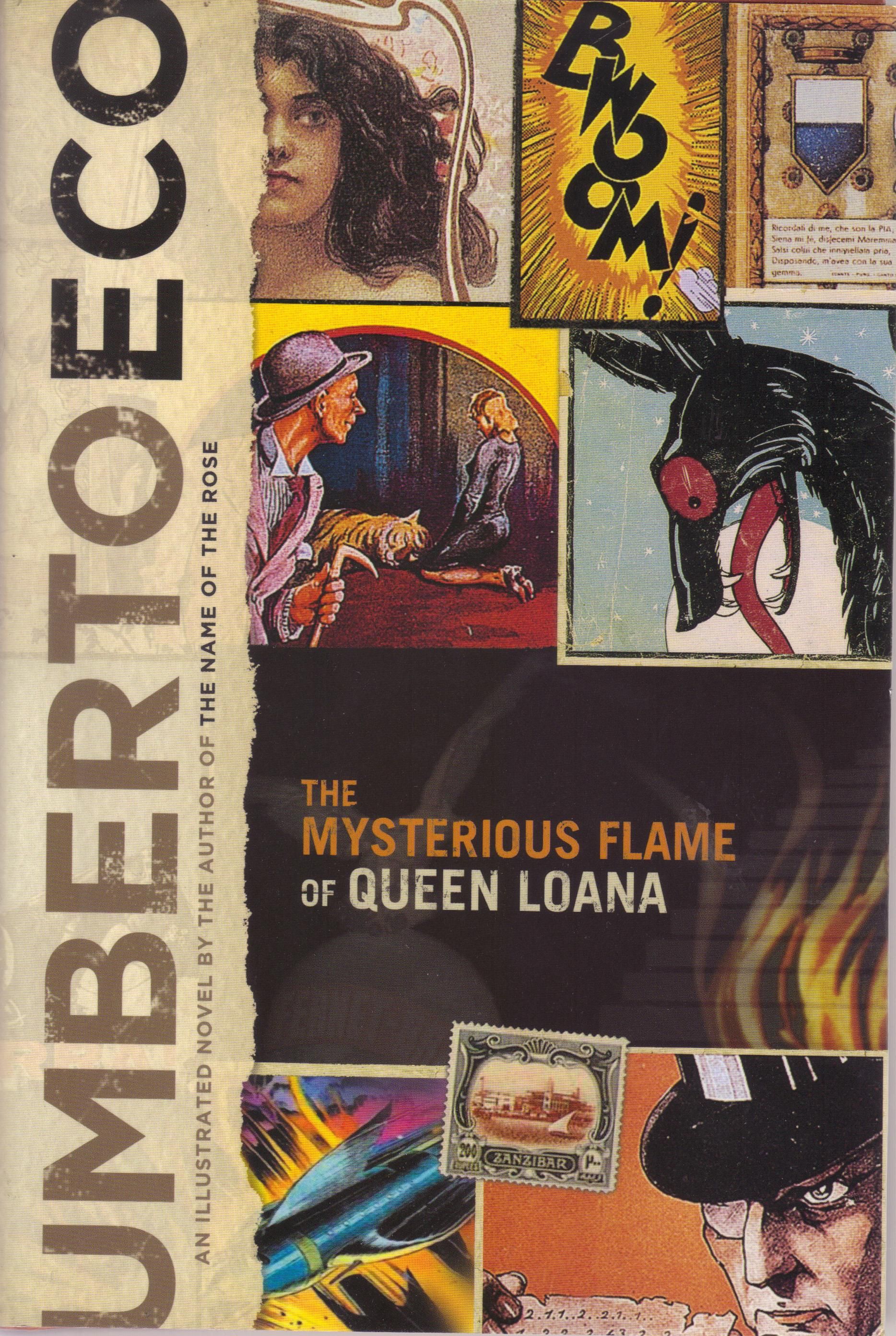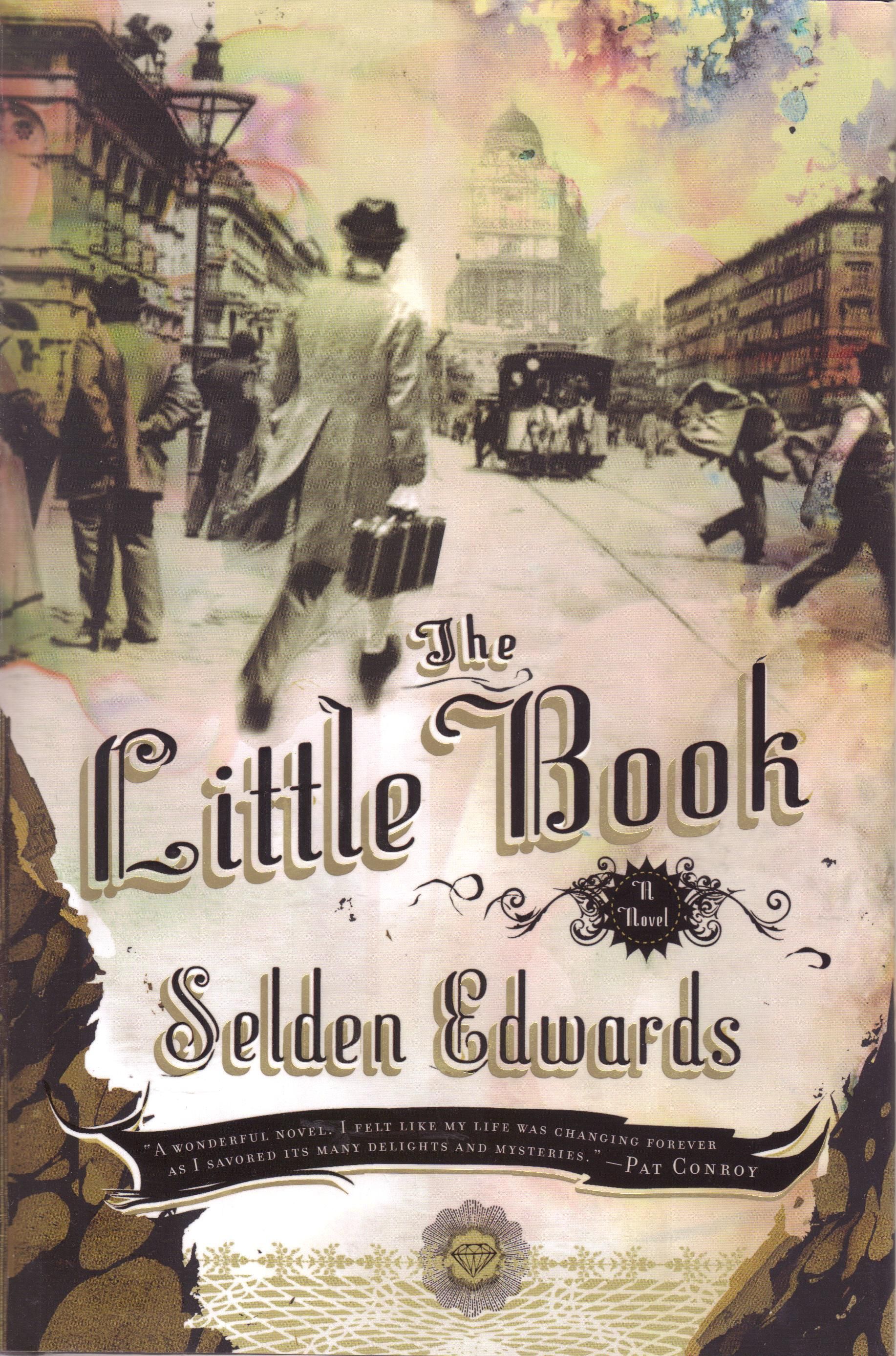Another month, another bunch of trade paperbacks. Plus: real books? What craziness is this????
All Star Western volume 1: Guns and Gotham by Jimmy Palmiotti (writer), Justin Gray (writer), Moritat (artist), Phil Winslade (artist), Jordi Bernet (artist), Gabriel Bautista (colorist), Rob Schwager (colorist), Dominic Regan (colorist), and Rob Leigh (letterer). $16.99, 168 pgs, FC, DC.
I really enjoyed the first issue of All Star Western, so I was looking forward to this trade. As of this moment, it's my favorite DCnU trade, mainly because I don't have the nagging issues with it that I did with the other solid trades - Animal Man, Swamp Thing, and Frankenstein - and Palmiotti and Gray seem to have a good handle on the series. Perhaps it's because the writers had been writing Jonah Hex for so long in the old DCU that they didn't have to re-invent him - they just moved him to Gotham, teamed him up with Amadeus Arkham, and set him loose. He's the exact same character, so they don't have to spend a lot of time retelling his origin. I like this more than I liked their previous work on Jonah Hex because of its more serial nature - whenever I dipped into the old Jonah Hex, the one-and-done stories felt a bit rote, and I'm glad that in the DCnU, the stories feel a bit more important (I know that's silly, but that's how I feel, man!). Gray and Palmiotti are still telling short stories - they manage to get through two complete ones in these six issues - but because Hex isn't moving around and there's a sinister force of plutocrats at large in Gotham directing events, it feels like we're getting a bigger epic. I know subsequent issues tied into the whole "Court of Owls" thing, and while that kind of bugs me, it still makes this book feel more like my kind of comic, rather than what I saw as a more simplistic, "Hex comes to town and fucks up the bad guy" storytelling style from the previous series. I know that single-issue stories are kind of a lost art in comics these days and that Palmiotti and Gray told good ones, but I like them in moderation. They're tough to do well, and whenever I read an issue of Jonah Hex, they all seemed very similar to each other.
Anyway, in this trade we get the guy who butchers prostitutes (unfortunately, the Women in Refrigerator trope is evoked early on in this comic), which Hex and Arkham figure out is connected to the wealthy of Gotham and the "Crime Bible," which is still kicking around the DCnU even after the reboot. In the second story, our heroes discover that several children have been kidnapped from Gotham's ghettos, and they discover some nefarious machinations deep in the sewers of the city. It's not too hard to figure out who the bad guy is in this story, but the point is that the writers are adding to the mythology of Gotham, especially when Hex and Arkham are sidetracked by the Indians from The Return of Bruce Wayne, who help - sort of - them out. In a series where things are connected, I can forgive some of the more banal plots if the other aspects are working, and Palmiotti and Gray do a nice job with Hex and Arkham - the oddest of couples - and the world-building parts of the story. Plus, there are some surprises - I didn't see what happens to Cromwell and Lofton coming - so there's that. Finally, the book is a $3.99 comic, which in the DCnU means back-up stories (which is far cooler than in the Marvel U., where it means "You'll totally pay for 20 pages as long as it's our big guns, suckers!"), and we get a nice little El Diablo story and the Barbary Ghost, an original Palmiotti/Gray/Winslade creation. She's a Chinese woman in San Francisco looking for revenge against the men who killed her family! So, not terribly original, but not bad, either.
Moritat is probably not to everyone's tastes, but he does very nice work here, probably the best of his career (I have a soft spot for Solstice, but this is probably better technically). His details are marvelous - he brings Gotham alive very nicely as a 19th-century metropolis, and it's always nice to see random passersby in comics, because they're usually so focused on the main character. Moritat's Gotham is a bustling place, and although his women are a bit too pretty (sure, it's a city, but indoor plumbing can't be that widespread), that's the nature of the business, isn't it? Bautista colors the book in a lot of brown, but what that does is help the rare brighter colors stand out much better, and it's not like it's a poor choice - a city in the 1880s would probably look pretty crappy. The one thing I don't like about the art is the digital effects, which don't fit in too well with the rest of it. The sky is often colored using the effects, and it looks a bit off. It doesn't bother me too much, but it is a bit weird. It's always nice to see Bernet's artwork, and his El Diablo story is nicely done, and while I'm hot and cold on Winslade, the Barbary Ghost story is quite nice - it's not too long, so maybe Winslade could take his time a bit. The main character does appear like she's going to fall out of her shirt at any moment, but I guess that's the way it is.
This is a good trade - it's not exactly enjoyable, because horrible things keep happening, but it's Gray and Palmiotti writing compelling stories and Moritat drawing them well. I was a bit wary about Jonah Hex showing up in the big city (even after Palmiotti reassured me last year that it would be keen), but everyone pulls it off quite nicely. I'm looking forward to the next trade!
Rating: ★ ★ ★ ★ ★ ★ ★ ★ ☆ ☆
B.P.R.D.: Plague of Frogs volume 4 by Mike Mignola (story), John Arcudi (story), Guy Davis (artist), Dave Stewart (colorist), and Clem Robins (letterer). $34.99, 402 pgs, FC, Dark Horse.
This volume of B.P.R.D., which as you can see is the fourth one to deal with the "plague of frogs" from way back when the series started, is slightly disappointing mainly because it ends oddly. Not really poorly, but oddly. In this volume, Liz is the focal point, as she has that weird connection to Martin Gilfryd (or Memnan Saa, as I guess we should call him) and he ends up trying to use her to stop the frog invasion. Both Memnan Saa and the Black Flame, who shows up in the final five-issue mini-series, try to convince members of the Bureau that they're making the world better (by killing a large number of people in it), but nobody's buying it. The reason it ends oddly is because in the final series, Arcudi (and Mignola) finish with a stange anti-climax: Liz seems to inadvertently save the world, and the frog army is revealed as far less than what it's been built up to be. Maybe that's the point - they were always scarier in the minds of their enemies than in reality - but for a pulp adventure like this, that feels too subtle. The first two mini-series in this collection - The Warning and The Black Goddess - are well done, but by the time King of Fear came along, it feels almost like Mignola and Arcudi wer bored with the gigantic "Plague of Frogs" epic and just wanted to end it. It's very weird. The mini-series feels disjointed - Kate is trying to get Johann back and give Lobster Johnson some measure of peace in the early issues, and then both Abe and Liz see what might happen if either Memnan Saa or the Black Flame triumphs, and it just feels like they wanted to have a five-issue mini-series but didn't quite have five issues of material for it. I guess it's disappointing because B.P.R.D. is so consistently excellent, so to have issues #4 and 5 of the final "Plague of Frogs" epic fall short magnifies the disappointment.
There's nothing wrong with Davis and Stewart, of course. They're both fantastic, and the book looks wonderful. Davis is tremendous at drawing the rough-hewed monsters that the Bureau has to fight, and there are pages and pages of all sorts of creatures battling each other, and it looks superb. Whatever the fault of the book, it has nothing to do with the artwork!
I'm not sure when the next giant-sized sucker is coming out - King of Fear is from 2010, so Dark Horse is getting caught up rapidly - but I know I'll buy it. I just hope it's recovered from this small hiccup at the end of this volume. Oh well!
Rating: ★ ★ ★ ★ ★ ★ ★ ☆ ☆ ☆
Spaceman: The Deluxe Edition by Brian Azzarello (writer), Eduardo Risso (artist), Patricia Mulvihill (colorist), Giulia Brusco (colorist), and Clem Robins (letterer). $24.99, 193 pgs, FC, DC/Vertigo.
Azzarello and Risso's Spaceman is a strange bird. It's a solid pulp adventure, basically a heist story that, like all heist stories, goes horribly wrong, but it feels like it ought to be more than that. The reason it's called "Spaceman" is because the main character, Orson, is a man who was created in a lab to withstand the rigors of a journey to Mars. But this is years later, and Orson is just a junk dealer trying to make ends meet. The book is set in the future, when the icecaps have melted and water has covered most of the city in which Orson lives and the rich live in comfort behind giant dikes. Orson watches a reality show in which kids compete to be adopted by a rich celebrity couple, and one of the kids - Tara - gets kidnapped. Orson stumbles upon the kidnappers and manages to save Tara, but that just leads him into a whole world of trouble, as the cops think he's the kidnapper, the guy who hired the kidnappers hires someone to get her back, and other lowlifes decide to horn in and take her themselves. It's a bit of a mess. Meanwhile, we get flashbacks to Orson's time on Mars, when he and the other "spacemen" found something that causes rifts in their group.
There's nothing really bad about Spaceman - Azzarello writes a good noir story, and as this is limited, he actually needs to get to the point quickly (which is something that hurt 100 Bullets, in my opinion). The characters are fairly stock stereotypes, but that's fine when you're writing a stock noir story, and it's really about whether you can keep every exciting, and Azzarello manages that. There are two things I don't understand, but that's because I'm dim, I'm sure: What happens with Ottershaw, and what happens on the last page? I honestly have no idea what the last page means. I don't want to spoil anything, but can anyone explain? It makes no sense.
Anyway, Risso is excellent as usual, although he does tend to draw all women pretty much alike, but it's always a pleasure to see his layouts and the way he brings the world in which the story is set to vivid life. The characters are interesting, the backgrounds are marvelous, and Risso always tries to show us events in different ways. Most of the time it works well, too, which is nice. I would love it if Marvel gave him an Avengers book or something like that, because that would be so oddball it would probably work.
I have no idea, however, why this takes place in the future. The "space" sections don't seem to add anything to the book, and even if Azzarello wanted them in there, they don't need to be set on Mars. There's no reason for this to be set in a future where environmental disaster has destroyed a good deal of civilization, because the story is not contingent on that in any way. It's a kidnapping story, and everything that happens could happen in a regular world. Did Azzarello set it in a post-apocalyptic world because he thought Risso would have fun drawing it? I don't know. It's very strange, though.
As I tend to like noir tales, I enjoyed Spaceman. It's not a great comic by any means, but it's fun to read because Azzarello brings in so many variables it really is difficult to figure out what's going to happen, but it's never confusing (well, except for those few spots I mentioned above, but they're not too concerned with the main story). It's entertaining, and Risso makes sure it looks cool. That's not too bad!
Rating: ★ ★ ★ ★ ★ ★ ☆ ☆ ☆ ☆
Inferno: A Sleep and a Forgetting by Mike Carey (writer), Michael Gaydos (artist), and Nathan Pride (letterer). $14.99, 133 pgs, BW, Transfuzion Publishing.
Transfuzion is Gary Reed's new publishing venture, and as Reed was behind Caliber Comics in the 1980s and 1990s, it's not surprising that he's been collecting some of the old Caliber books. The latest is this one, which was a mini-series from 1996. It is, unfortunately, a bit more interesting as a historical artifact featuring early work by Carey and Gaydos than a really good comic. The story centers on a man who, at the beginning of the book, is killed. He wakes up in Hell (well, Inferno, hence the name of the book), and everyone he meets there calls him "Terence" even though that's not his name. As the story unfolds, it turns out that he was in Hell before, and he was named Terence, but he managed to escape, and now he's back. The Lord of Hell, Baal, doesn't think this is too wonderful a thing, and the plot concerns Baal sending people out to stop Terence from doing what he's trying to do and Terence trying to, you know, remember what he's supposed to do.
It's not a bad comic, it's just not very memorable. Terence is assisted by Nostradamus (because why not?) and a woman named Shule, who's a were-beast - a fancy one, as she can turn into anything, really, as long as she eats some of it (it's unclear that that's how her power works; at one point Terence mentions it, but that's late in the book and we have no idea how she was able to change before that). Shule was in love with Terence before he escaped, so she wants his memory to come back, but as Terence moves through Inferno and discovers more about his past self, he likes him less and less - Terence seems like a bit of a douche. But Carey moves the plot along nicely, hitting all the right notes, and he adds the obligatory twist toward the end. The biggest problem with the book is that it seems somewhat pointless - I don't want to give anything away, but Terence's plan seems kind of dumb. It doesn't redeem him in any way, and it makes the entire book, in retrospect, seem far more nihilistic than it originally seemed (and as it's set in Hell, it's already plenty nihilistic). Carey's writing is perfectly fine - he's never been my favorite, because he tries really hard to write like Alan Moore or Neil Gaiman but he's not as good as those gentlemen are, but he's not terrible, and he manages to create some interesting characters, but because he doesn't delve too much into each character - even Terence - and because the plot doesn't carry the book, it doesn't really work for me.
It's always nice to see Gaydos' art, although he's one artist who seems to work better in color, where his harshness is eased somewhat. He can still be harsh in color, but colors also tend to smooth out his rough edges just enough. The starkness of black and white works well for a lot in this book, but it would have been interesting to see it in color, because someone like Shule, for instance, would be interesting to see in a slightly more feminine aspect before she changes into all manner of creature (or man) - the contrast would have been pretty neat. Gaydos does quite a nice job creating this depressing city and its bludgeoned inhabitants, and his characters look like they've been through Hell, which of course they have. Gaydos' biggest weakness has, it seems, always been action, because those scenes in this book are the weakest, but there aren't a lot of them, and he does what he can.
I don't hate that I bought this book, because it's always interesting to see where creators started and how they've evolved over the years. I do wish it were better, but it's certainly interesting for a good portion of it. If you're a big fan of the creators, it's definitely something to check out. It's just kind of there, though.
Rating: ★ ★ ★ ★ ★ ½ ☆ ☆ ☆ ☆
Lobster Johnson volume 2: The Burning Hand by Mike Mignola (story), John Arcudi (story), Tonci Zonjic (artist), Dave Stewart (colorist), and Clem Robins (letterer). $17.99, 110 pgs, FC, Dark Horse.
The second volume of Lobster Johnson has a misleading blurb on the back. According to the synopsis on the back, "When a tribe of ghostly Indians start scalping city policemen, Hellboy's crime-fighting hero Lobster Johnson and his allies arrive to take on these new foes and their gangster cronies!" This is so far from what the book is actually about that I think it's only on there to piss Rob Schmidt off. I mean, yes, there are "ghostly Indians ... scalping city policemen" in this comic. By Page 8 of Issue #1, they're all dead and they never show up again. And they're not Indians, they're gangsters made up to look like stereotypical Indians. Why Dark Horse put this on the back of the book is beyond me. This book is about Lobster Johnson's showdown with a gangster, yes, but the gangster has mystical allies, one of whom ties into B.P.R.D., and unless Dark Horse didn't want to spoil things, I don't know why they didn't mention that. Oh well. I won't spoil it, because it's a pretty neat reveal, but it's strange how they publicize this comic.
Anyway, this is basically a story about a gangster trying to lure Lobster Johnson out so he (the gangster) can kill him, and it works like a charm. Well, except Lobster Johnson doesn't die, but he does get lured into the open, and bodies start dropping, on both sides. All the common elements of pulpy fiction are here - there's the mysterious costumed vigilante, the weird creatures of the night, the gangsters, the plucky reporter who won't let go of the story even though it's dangerous for her to remain on it, and Peter Lorre. YOU CAN'T HAVE PULP COMICS WITHOUT PETER LORRE!!!!! It's all very exciting and eerie and spooky, and it's obviously part of a bigger story arc that Mignola and Arcudi are working on, because there are some loose ends that don't get snipped. But that's okay - it's a fun comic. I don't have too much to say about Zonjic's art - it's very pulpy, and he benefits (as do most artists) from having Stewart color the whole thing. Zonjic's a good artist on his own, but it's impressive how much richer his work looks like when Stewart's on the job. That's why Stewart gets paid the big bucks!
I don't recall reading a bad comic set in the Hellboy-verse (not even the B.P.R.D. one from above!), and this certainly isn't one. It's fine pulp adventure, and there's nothing wrong with that!
Rating: ★ ★ ★ ★ ★ ★ ★ ☆ ☆ ☆
A Man Named Hawken by Benjamin Truman (writer) and Timothy Truman (artist). $19.99, 157 pgs, BW, IDW.
I've been a fan of Tim Truman's for a long time, so I always try to check out what he's working on. He digs him some Westerns, so I imagine this was a dream project for him - working with his son on a Western. The story is fairly simple, as befits a Western - Kitchell Hawken is an old man who's lived a hard life, and he's looking for revenge against his former employer, who was once a criminal but has graduated to a more "respectable" living in Tucson. Hawken goes about his business, tracking down the bad guy's deals until he finds out where he is, and of course the bad guy - his name's Gallis - sends a gunslinger after Hawken, and of course it's a dude Hawken himself trained. Hawken is a bad dude, but we find out over the course of the book that he was trying to get away from the life when Gallis and his gang tracked him down and killed his family. So of course he wants revenge!!!!
Truman the Younger doesn't do anything too fancy with the story, although he does add some interesting supernatural elements. Hawken is haunted by every single person he's ever killed, so he's often talking to ghosts, even those he's killed earlier in the series. This allows Truman to give us some background on Hawken without him telling anyone, because he's not the kind of person to share. Part of the plot involves odd little creatures, too, so there's that. But otherwise, there's nothing too astonishingly original about the plot - Hawken finds someone who can help him find Gallis, gets information from him, and kills him - rinse and repeat. Sombre, the bad guy tracking Hawken, tracks him. Hawken meets up with the wife of an old rival, and we immediately expect Pop Culture Rule #1 to kick in, and it does ... but at least Truman doesn't just follow the same old boring script completely with that, and that makes it a bit more interesting (although it probably then falls under Pop Culture Rule #2, which I won't get into here because it will spoil too much!). Truman obviously has ideas for a sequel, because I don't think it's spoiling too much to say that Hawken doesn't get to Gallis in this volume, so his revenge is incomplete. There's still plenty of violence to satisfy the bloodthirstiest among us!
For me, the biggest reason to get this book is the Elder Truman's artwork, and he does not disappoint in any way. This is amazing art, possibly some of the best of Truman's career, and it's a pleasure to just look at each page and marvel at how Truman does it. It's in black and white, so you can see every stroke, and it appears Truman uses a nice variety of different tools. Some of the finer lines look like magic marker, and he definitely uses some very different kinds of brushes on other parts. For backgrounds, he often uses simple inks that don't add much definition, but still remain precise. Other parts of the book are clearly painted, creating a nice contrast to the more clean lines of his pencils. Even though the book isn't colored, Truman uses shades so well that there's a lot of different moods to the drawings, and the different tools he uses adds texture and richness to each page. Some of the computer effects are poorly chosen, but others and blended seamlessly into the art. Strangely, the most distracting "modern" thing in the book is the lettering, which is digital and looks a bit out of place. It's not bad lettering, but it does seem a bit off. But Truman's beautiful work makes Hawken feel like a gritty, dirty Western, and he has a lot of fun showing people getting killed in fairly horrific ways, too. The book is wonderful to study, and I'm sure I'm not doing the way Truman draws it or the tools he uses justice.
The Younger Truman's story is pretty good, and he knows that his dad is a very good storyteller in his own right, so the two work well together. Maybe the story won't blow you away, but when you add the amazing artwork, this becomes a very good comic. It's nice to see that Truman the Elder is still at the top of his game, and I look forward to a sequel.
Rating: ★ ★ ★ ★ ★ ★ ★ ½ ☆ ☆
Saucer Country volume 1: Run by Paul Cornell (writer), Ryan Kelly (artist), Jimmy Broxton (artist), Goran Sudžuka (artist), Giulia Brusco (colorist), Lee Loughridge (colorist), Cris Peter (colorist), and Sal Cipriano (letterer). $14.99, 143 pgs, FC, DC/Vertigo.
I bought the first issue of Saucer Country and thought it was okay, but figured I'd wait for the trade. Now the trade is out, and issues #1 to 6 are ... well, still okay. But nothing great. The story is fine - Arcadia Alvarado, the governor of New Mexico, decides to run for president. In almost the same instant, she tells her two closest advisers that she was abducted by aliens and that they're planning an invasion. This, of course, does not endear her to those two people, but she also tells them that she's not going to go public, and she just wants them to keep quiet while she investigates her "abduction experience" and, if she wins the presidency, she'll be in a better position to defend the planet when the invasion begins. Her ex-husband, Michael, was also abducted, so they bring him into the "circle of trust." They also recruit an ex-Harvard professor who has written books about UFOs and thinks he talks to version of the couple on the Pioneer 10 plaque.
Cornell is a good writer, but for some reason, this doesn't really work for me. He doesn't come right out and say that Alvarado is crazy or that she was definitely abducted, which I assume will be part of the quest of the series - is she telling the truth? There's a lot of stuff going on in these issues, from the therapist who's trying to place fake memories in Michael's head to the strange organization that has a lot of interest in the professor. There are a couple really cool scenes, like when Alvarado visits the therapist and tries to mess with his head because he knows too much, or when the professor - Joshua Kidd - explains the history of UFO research. But it doesn't work for me as a whole - it's supposed to be serious, but it feels silly. I don't think it's supposed be a dark satire, but that's kind of what it feels like, as if Cornell is mocking politics in general, as Alvarado decides to go on the campaign trail and search out alien encounters at each stop. Doesn't that just sound silly? It's odd, because the tone is deadly serious - for the most part; I mean, at one point Michael kicks rabbits - but the subject matter is utterly ridiculous. The idea of a politician believing she's been abducted by aliens, especially when her ancestors are illegal aliens, is pretty brilliant, but Cornell immediately delves into goofy UFO organizations and weird therapists. The politics of it all will be, I assume, explored in subsequent issues, but I'm not sure if I'm interested anymore.
Kelly's art is always a pleasure, and this is a very nice-looking comic. Kelly does a better job with the "real-world" elements than the alien stuff, but the alien stuff is hard to get because he's using the standard tropes of alien abduction, and it's harder to make them look impressive. The rabbits are keen, though. Broxton's art on issue #6 is good, too, as he zips all over history and has to draw a lot of bizarre stuff. There's nothing wrong with the art on this book, and I'm certainly glad that Kelly is getting the work.
I don't really have much more to say about Saucer Country. I guess it's just not for me. I don't know what Cornell is trying to do, but after six issues, I'm not enjoying it. And that's what it's all about, isn't it?
Rating: ★ ★ ★ ★ ★ ½ ☆ ☆ ☆ ☆
Uncanny X-Force volume 5: Otherworld by Rick Remender (writer), Greg Tocchini (artist/colorist), Phil Noto (artist), Billy Tan (artist), Dean White (colorist), José Villarrubia (colorist), and Cory Petit (letterer). $19.99, 121 pgs, FC, Marvel.
The "Otherworld" arc of Uncanny X-Force got a lot of scorn heaped on it because of the terrible artwork, and I'm not here to contradict that. It's sad, because I know Tocchini can be a good artist, but this is not good at all. First of all, it looks rushed, which shouldn't be, as Tocchini was just drawing four issues and presumably had some lead time, but from the first few pages, it looks sloppy. Tocchini's figure work is not very good, either, as he draws characters in strange, exaggerated poses that look completely awkward. This extends to his faces, which are malleable to the point of incoherence. In the most important panel of the book, Brian Braddock looks completely ridiculous, robbing the scene of any emotional impact (I understand that he's not quite himself in the panel, but that doesn't mean he has to look like an idiot). Tocchini's storytelling is terrible, too, as he draws panels that don't seem to have any relationship with any around them, places characters almost randomly in those panels, and often emphasizes the wrong thing in each panel. It's extremely messy artwork, and it's really too bad. If you can find a copy of The Last Days of American Crime, which Tocchini worked on with Remender, I suggest you check that out, because the art is miles better than this. Maybe Tocchini just isn't a superhero artist. It happens.
Remender's story isn't great, either, so there is that. Fantomex and Betsy are dragged off to Otherworld so the Captain Britain Corps can execute Fantomex for killing the Apocalypse child. Why they care is never explained. Betsy betrays her two brothers, Brian and Jamie, and rescues Fantomex, while Wolverine, Deadpool, and Age of Apocalypse Nightcrawler head to Otherworld to save them. Meanwhile, some strange goat-headed creature is attacking Otherworld so he can control all of reality. Fantomex has some connection to Otherworld (I don't know if it's been mentioned in other comics, but I don't remember it at all from this one), and eventually he runs across another "graduate" from the Weapon Plus program (who's really, really silly but isn't meant to be). Eventually, all the good guys come together to fight the goat dude, and Betsy and Brian need to make hard choices about how to save all of reality. Then, the team helps AoA Nightcrawler find AoA Iceman and kill him. Because that's what you do.
It's all very ridiculous, and it relies far too much on knowing minutiae from Marvel continuity - I've railed about this kind of story before, as writers these days use emotional connections from other comics to try to make their comics resonate emotionally, and it usually doesn't work. I know quite a bit about the history of the Braddock family, but if you had never come across Jamie Braddock before, you'd have no idea why Betsy is so surprised that he's working on the side of the angels. Remender doesn't even try to explain it - he just assumes we all know what Jamie has done. At one point, Betsy mentions casually that Brian killed a man who was attacking her. This is part of the theme of the arc, but Remender is using a 30-year-old story that I can't imagine a lot of people have read to dredge up some emotional connection to the story. Yes, Marvel and DC comics use continuity, and that's fine. But the story has to mean something on its own, and too often, writers use old stories in the hopes that we'll remember them fondly and then connect their stories to those old ones. It doesn't work that way. When Betsy reveals what she had to give up to save Fantomex, it ought to be a big, emotional moment, but it feels hollow because Remender hasn't done a good enough job making these characters actual interesting people, so Betsy's revelation is almost shrug-worthy. Listen, I love Betsy, and I'm glad she's getting a slightly higher profile through this series, but I don't think Remender's done a particularly good job with her. But then again, I don't he's done a particularly good job with any character in this series, as it's operating almost on pure plot. That's fine, but when the plot breaks down, as it does in this arc, there's not a lot left. Especially because the resolution of that plot is utterly ridiculous. It might not have been if we cared more about the characters, but we don't. It's a shame.
I mentioned with regard to the last volume that Remender had one great idea - Apocalypse reborn as a child, and should he be killed - and has managed to spin an entire series out of it, but when that one idea is all you have, the quality of the book might suffer. By the time we get to this arc, Remender seems to be spinning his wheels a bit. I know he's wrapping the book up right about now, and I'll probably get the next two trades (I imagine there will be two more trades, unless Marvel really tries to stretch things out into three) just to see what happens, but this is nowhere near the intense comic it was in the first arc and even into the second one. It's too bad - there's a lot of oddball moments peeking out that could make for a more psychologically fascinating book, and maybe Remender manages to get more into that now that Betsy has done what she's done (don't spoil it too much!), but it's not quite coming together. I hope it does, though!
Rating: ★ ★ ★ ★ ★ ☆ ☆ ☆ ☆ ☆
The Mysterious Flame of Queen Loana by Umberto Eco (translated by Geoffrey Buck). 469 pgs, Harcourt, Inc., 2004.
Umberto Eco writes books that revolve around, for the most part, texts. He loves the idea of texts informing the world, containing secrets, and driving humanity forward. Usually he uses texts in inventive ways, and one of his books - The Island of the Day Before - is less about texts than the others (it still uses them, but not as heavily as his other books), but he's still very fascinated with them. With The Mysterious Flame of Queen Loana, he reaches his apotheosis, and unfortunately, his interest in texts becomes a full-blown obsession, to the detriment of the actual book. This is pretty easily Eco's weakest book, even though his language (translated, of course) remains as dazzling as ever. It's the story of a man nicknamed Yambo, a rare book dealer in Milan who suffers an "incident" and wakes up from a coma with amnesia - well, a form of amnesia. He can't remember details of his persona life, but he can remember every cultural thing he's ever learned, and he quotes liberally from memory, recalls poems about fog (he has a particular interest in fog), and can remember even the most obscure pop culture from his childhood. As he tries to recall more about his life, he heads to his childhood summer home in Solara, where he discovers a treasure trove of ephemera from the 1930s and 1940s, when he grew up there (the book is set in the spring of 1991). He spends a good chunk of the novel reliving moments from his childhood, and then he finds a treasure greater than anything else and has, it seems, another "incident." In the final act of the novel, he seems to hover in a strange, nowhere place, remembering things he did when he was a child, including an exciting event that helped thwart some Nazis in the area, and he continues to descend (or ascend, I suppose) through the layers of pop culture that have accrued in his mind. He becomes more and more obsessed with a girl from his teen years whom he never had the courage to approach, but of course, he's not sure if anything that's happening is real. And then the book ends. Is Yambo dead? Does the world end? I'm not smart enough to answer those questions, but it seems like he does, in fact, die. Who knows.
The problem with the book is that Eco completely ignores plot to wallow in Yambo's obsession with culture. There's nothing wrong with writing a plotless book, but Eco doesn't do a very good job with it, and the book becomes a litany of things that he remembers from his childhood, and even though Eco tries to string them together into a somewhat coherent narrative, he doesn't do a very good job of it (in my humble opinion). He drops a bombshell at the end of the second section and then doesn't pursue whether what Yambo discovered is even real. Again, I suppose it's not the point, but when so much of the book is basically "Hey, remember this shit?", I find it difficult to care. Early on, when Yambo is trying to reconstruct his life, it seems like Eco is going one way. When Yambo remembers his adventures in World War II and his obsession with the girl, it's clear that Eco could have done more with the plot, but he chose not to. In the end, the only thing that saves the book is that Eco is, after all, a very good writer, so his language is melodious and powerful even as what he's writing about is dull. The role call of texts becomes flashy and ostentatious, and the book becomes far less interesting, unfortunately. Eco seems like he wants to write an esoteric novel, but he doesn't quite have the chops. Perhaps his mind just doesn't work that way.
Eco is still obsessed with texts (I'm reading his latest, which is about the Protocols of the Elders of Zion), but that's fine as long as he builds this obsession around muscular plots. This is really the only book he's written where the plot isn't strong, and that's why it's his worst book. Obviously, it's not a terrible book, and it is somewhat fun to see all these weird and wonderful pop culture references (the book is illustrated, too, so there's a lot to see), but it's weaker than anything he else he's written. If you've never read anything by Eco, The Mysterious Flame of Queen Loana is not a good place to start.
First five paragraphs:
"And what's your name?"
"Wait, it's on the tip of my tongue."
That is how it all began.
I felt as if I had awoke from a long sleep, and yet I was still suspended in a milky gray. Or else I was not awake, but dreaming. It was a strange dream, void of images, crowded with sounds. As if I could not see, but could hear voices that were telling me what I should have been seeing. And they were telling me that I could not see anything, yet, only a haziness along the canals where the landscape dissolved. Bruges, I said to myself, I was in Bruges. Had I ever been to Bruges the Dead? Where fog hovers between the towers like incense dreaming? A gray city, sad as a trombone with chrysanthemums, where mist hangs over the façades like tapestries ...
My soul was wiping the streetcar windows so it could drown in the moving fog of the headlamps. Fog, my uncontaminated sister ... A thick, opaque fog, which enveloped the noises and called up shapeless phantoms ... Finally I came to a vast chasm and could see a colossal figure, wrapped in a shroud, its face the immaculate whiteness of snow. My name is Arthur Gordon Pym.
Rating: ★ ★ ★ ★ ★ ☆ ☆ ☆ ☆ ☆
The Little Book by Selden Edwards. 398 pgs, Dutton, 2008.
Edwards apparently took 33 years to write this sucker, which is pretty impressive. It's a good book, too, so there's that. It's about a man named Wheeler Burden, who was born in 1941 but one day ended up in Vienna in 1897. He doesn't know how he got there, but because he was educated by a man who lived through the era in Vienna, he's able to fit in remarkably well. The book is about both his life in the 20th century and what he does in 1897, and I can't really get too far into it without spoiling quite a bit. You're just going to have to trust me!
Edwards creates some very interesting characters, beginning with Wheeler. He's being raised by his mother because his father, a famous World War II hero, died in a Nazi prison shortly after he was born. Wheeler's mother moved him to California, but he eventually went to a boarding school in Boston, where his father grew up, and there he meets Arnauld Esterhazy, the man who teaches him about Vienna. Wheeler goes to Harvard, like his father, but he leaves before he finishes and becomes a rock star. He plays at Altamount and his band becomes huge in the early 1970s, but he walks away from that career too. In 1988, something happens to him and he's transported back to 1897. There he meets Sigmund Freud, among other famous people, and he also meets two other people (again, I don't want to give it away) who will have a huge impact on his life. He falls deeply in love, but he's not sure if he should do anything about it. What happens if he tampers too much with the past? Will it have an effect on his future and the future of the world? He doesn't even know how much he should tell Freud - will it change the way Freud's career arcs? And what about the Hitler problem? Hitler, you might recall, was eight years old in 1897, and Wheeler is presented with an opportunity to do something about him. What should he do? And what's going to happen to him personally? Will he just stay in 1897 and live out his life, or will he somehow return to 1988? It's very vexing for him.
At times, Wheeler seems a bit too perfect - he's a fantastic baseball pitcher, a wonderful musician, and knows several languages - but Edwards manages to make him compelling, partly by surrounding him with people who are almost as dazzling as he is. Edwards also does a nice job with the historical aspects of the book, as Wheeler meets several young people who discuss philosophy and culture at one of the innumerable coffeehouses in Vienna. These people are very self-aware about both the decadence of Austria at the end of the nineteenth century and the new artistic movements roiling beneath its surface, and the way Edwards integrates these themes into the narrative (Mahler, for instance, is an example of the new artistic type) is well done. This is also a time of nascent anti-Semitism in politics, as Vienna's charismatic mayor, Karl Lueger, used anti-Semitism to ingratiate himself with the masses. Vienna was a prominent Jewish city, and the people that Wheeler hangs out with debate Lueger's appeal to the basest hatreds of humanity to further his agenda. Edwards isn't too subtle about it, but he does manage to link Lueger's politics with the rise of Nazism.
One reason this might have taken so long to write is because it's very tightly plotted, and unlike most time travel narratives (of which I'm not a huge fan), this doesn't have any holes in it. Some - if not all - of the mysteries that Edwards sets up are extremely obvious, but the narrative fits together wonderfully, so events that occur early on fit easily into the larger narrative when placed in context. Much of what Wheeler does isn't exactly mysterious, but when we do find out the story behind an event later on, it just enriches what we already know rather than revealing something crucial. I imagine it took a lot of tweaking to get it right, but Edwards does it well.
Edwards is a solid writer, using lush prose to create a romantic world that nevertheless had several fissures in it. Edwards obviously loves Vienna, and he does a fine job evoking the era and the people who populated it. Edwards delves into deep themes, most dealing with love and how it changes us, and if you like your prose the right amount of sentimental, you'll probably like The Little Book. Edwards has written a sequel to it, but I'm not sure if it's all that necessary, as he seems to leave no stone unturned in this book. The Little Book is an enjoyable experience, and if you're at all interested in Vienna or romance, you could give it a look!
First three paragraphs:
Wheeler Burden did not think of visiting Berggasse 19 until the third day in Vienna, or at least there is no mention of it in the journal he kept with meticulous care from almost the moment of his arrival. The first days he spent adjusting, you might say, to the elation of newness and the spectacle of this city he knew so well in theory but had never actually visited. Then the practicalities settled on him, followed by a deep feeling of displacement. Wheeler was a long way from home with no means of either identification or support. But before the gravity of the situation set in, he was almost able to enjoy himself. Much of the first day, of course, he was busy marveling at his mere presence in such a magnificent and imperial city. It was 1897 Vienna, after all. The first hour, we learn from the journal, he spent clearing the fog from his mind and pulling himself painfully back to full awareness, emerging from the miasma of what seemed like a long uneasy sleep, and from the catastrophic precipitating event he was nowhere near ready to remember.
In the first moments, Wheeler could only stare vacantly at the handsome men in dark coats and top hats, finely adorned women in long dressed with tightly corseted waists and well-defined poitrines, military officers in ornate and colorful regalia, workers carrying lunch boxes. Everywhere there were horse-drawn carriages of all sorts, and tall, elegant marble façades of the grand buildings for which Vienna at the end of the century had become renowned.
You do not need to know that Wheeler Burden had never been to Vienna per se but had traveled there many times before in his mind. He could speak German as a result of a natural fluency with languages, and he had a general grasp of the manner in which a young man in fin de siècle Vienna was expected to carry himself, both a result of what now seemed like careful training at the hands of his wise old mentor, the Venerable Haze, whom we will encounter momentarily. In fact, after some reflection, you might conclude that, as with so many heroes who are invited on extraordinary journeys, Wheeler's way had been prepared.
Rating: ★ ★ ★ ★ ★ ★ ★ ½ ☆ ☆
I couldn't quite get through every trade I got in November - the Nexus Omnibus is big, man! But I'll get to it next month. Plus: more prose, but no music. I have to save some money!!!


